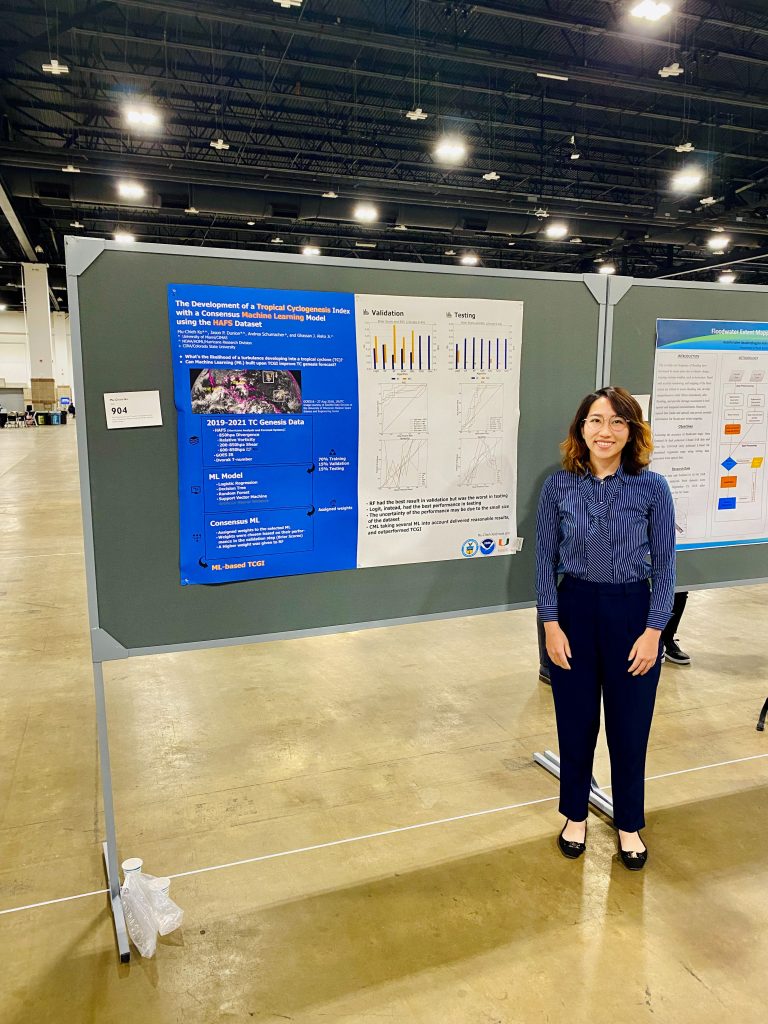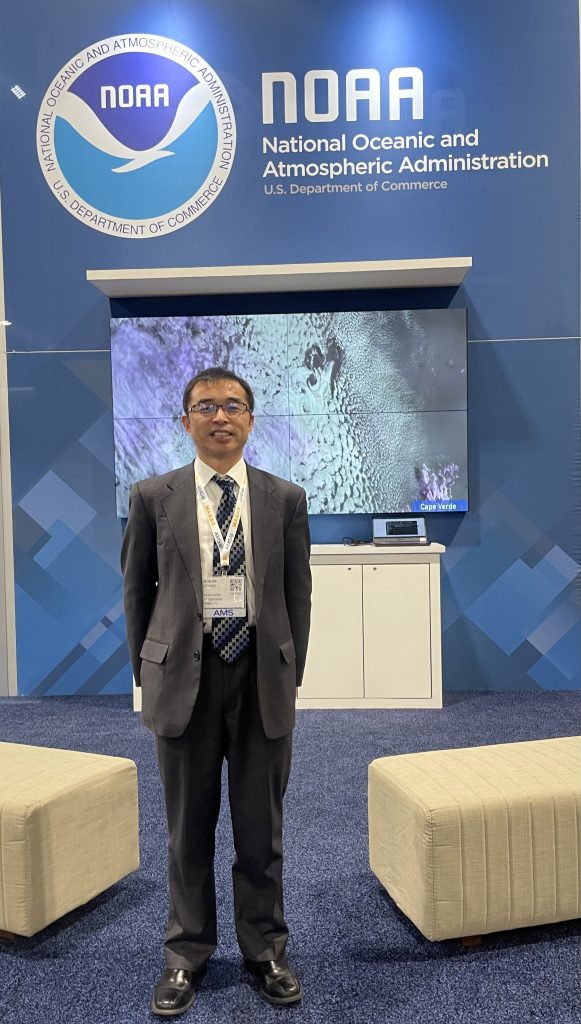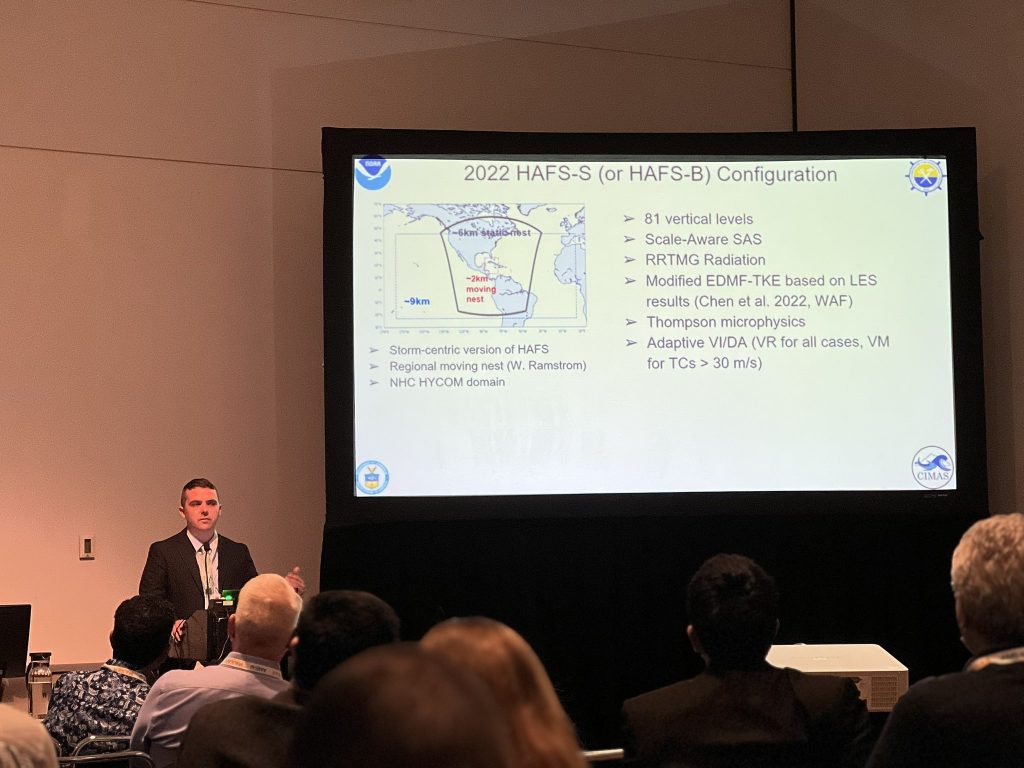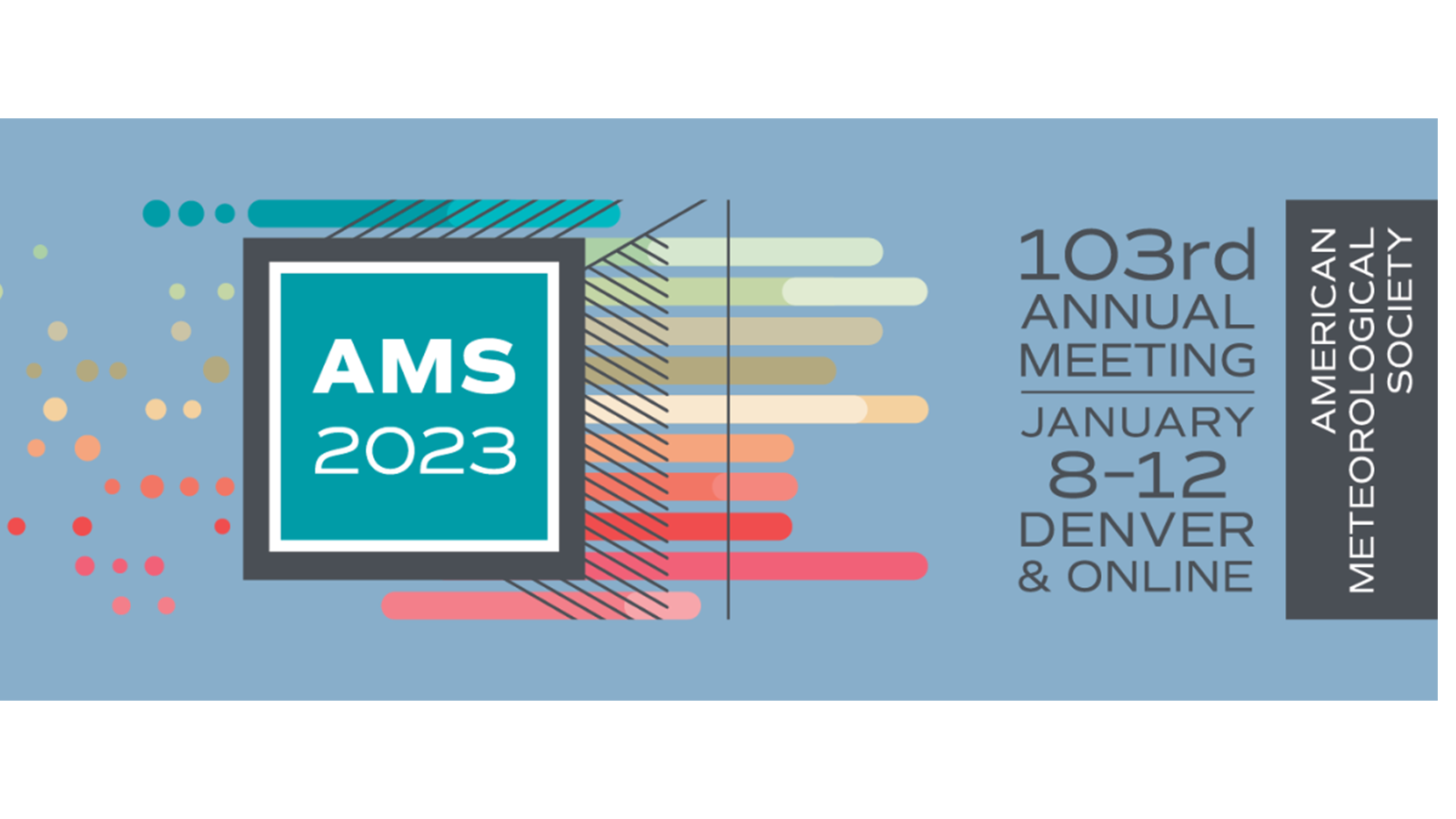The world’s largest yearly gathering for the weather, water and climate community took place earlier this month in Denver, Colorado. Scientists from NOAA’s Atlantic Oceanographic and Meteorological Laboratory (AOML) participated in the 103rd annual American Meteorological Society (AMS) meeting from January 8 – 12, both virtually and in-person. Formal presentations, posters, panel discussions and town hall meetings were all featured during the meeting.
The theme of this year’s AMS meeting was “Data: Driving Science, Informing Decisions, Enriching Humanity”. Staff from AOML’s Hurricane Research and Physical Oceanography Divisions joined scientists, educators, students, and other professionals from around the world in exploring the data revolution for decision-making today and in the future.


A number of presentations featured AOML’s research on uncrewed ocean-atmosphere observations, including Saildrones, underwater gliders, and small uncrewed aerial systems.
Uncrewed Ocean-Atmosphere Observations during the 2022 Atlantic Hurricane Season
During the 2022 Atlantic hurricane season, uncrewed systems were used in an innovative and coordinated effort to measure the entire air-sea transition zone (upper ocean, air-sea interface, atmospheric boundary layer) inside and outside of tropical cyclones.
Saildrone Observations of Turbulence Structure in the Hurricane Surface Layer
The turbulence structure in both the eyewall and outer-core regions of Hurricane Sam (2021) were examined after unprecedented high-frequency wind data were collected by a Saildrone in the surface layer of the Category 4 storm.
The development and evolution of NOAA’s next-generation Hurricane Analysis and Forecasting System (HAFS) was also discussed in several presentations.
The Hurricane Analysis and Forecast System: From Plan to Reality!
The Hurricane Analysis and Forecasting System (HAFS) is NOAA’s next-generation, ocean-atmosphere-coupled multi-scale numerical model and data assimilation system. HAFS is expected to provide reliable and skillful guidance of tropical cyclone track and intensity (including Rapid Intensification), storm size, genesis, storm surge, rainfall, and tornadoes associated with tropical cyclones.
Developing the Hurricane Analysis and Forecast System: Future Priorities
Development priorities in the next 2 – 5 years for the Hurricane Analysis and Forecasting System (HAFS) include: moving nests, multi-scale data assimilation, physics parameterizations for tropical cyclones, ocean-wave-atmosphere coupling, and research and forecasting products.
In order to investigate HAFS data assimilation performance, an observation-space diagnostic capability was developed in terms of root-mean-square innovations, mean innovations, and ensemble spread. These observation-space diagnostics were then applied in a set of experiments to test the current configuration of HAFS and to improve data assimilation of tropical cyclone inner-core observations.

Thanks to AOML’s participation, this year’s American Meteorological Society meeting was a resounding success. AOML is looking forward to contributing to the 2024 annual meeting in Baltimore, Maryland!
